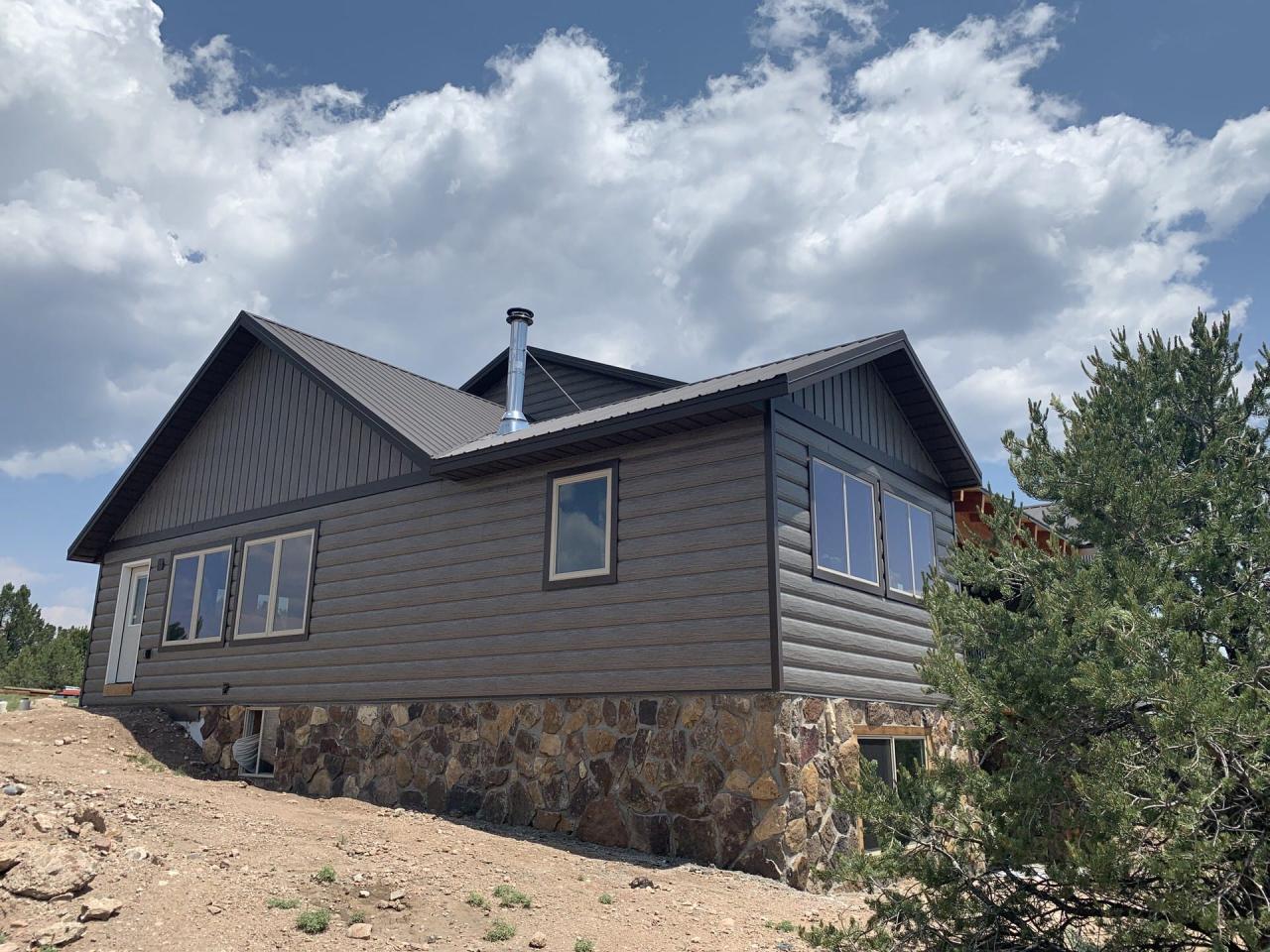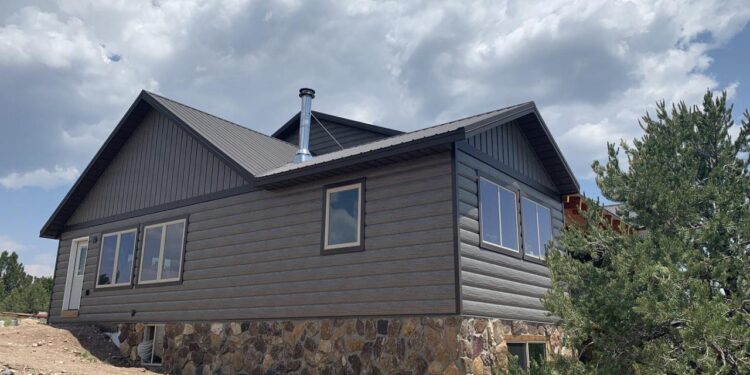
Delving into the realm of new siding and windows costs, this introduction aims to capture the interest of readers with a glimpse into the intricacies of pricing and materials. As we navigate through the details, you'll uncover essential insights to guide your decision-making process.
Moving forward, let's explore the breakdown of costs, estimation techniques, material options, and cost-saving strategies related to new siding and windows.
Understanding the Cost Components
When considering the cost of new siding and windows, it is essential to break down the various components that contribute to the overall price. Factors such as materials, installation, and the size of the project can all influence the final cost.
Let's delve into the specifics to gain a better understanding.
Cost Breakdown
- Materials: The type of material chosen for siding and windows plays a significant role in determining the cost. Common options include vinyl, wood, and fiber cement, each with its price range.
- Installation: The cost of professional installation is another important factor to consider. Installation costs can vary based on the complexity of the project, the labor required, and the expertise of the professionals hired.
- Size of the Project: The size of the area to be covered with new siding and windows will directly impact the overall cost. Larger projects will naturally require more materials and labor, resulting in a higher price.
Material Comparison
- Vinyl: Vinyl siding and windows are often the most affordable option, making them a popular choice for budget-conscious homeowners. However, they may not offer the same level of durability or aesthetic appeal as other materials.
- Wood: Wood siding and windows are known for their timeless beauty and natural appeal. While they may come at a higher cost initially, the long-term benefits and aesthetic value can outweigh the price.
- Fiber Cement: Fiber cement siding is a versatile and durable option that falls somewhere in between vinyl and wood in terms of cost. It offers the look of wood without the maintenance requirements, making it a popular choice for many homeowners.
Installation vs. Materials
- When comparing the cost of installation versus the cost of materials, it's essential to consider the long-term implications. While materials may make up a significant portion of the initial cost, professional installation ensures that the siding and windows are properly installed, maximizing their lifespan and performance.
- Opting for high-quality materials and professional installation may result in a higher upfront cost but can lead to savings in the long run by reducing the need for repairs and replacements.
Estimating the Cost
When it comes to estimating the cost of new siding and windows for your home, there are several factors to consider. By following a step-by-step guide, obtaining multiple quotes, understanding the impact of project size, and considering additional costs, you can ensure a more accurate budget for your renovation project.
Step-by-Step Guide
- Start by measuring the total square footage of your home that needs new siding and windows.
- Consider the material and quality of siding and windows you desire, as this will greatly affect the cost.
- Factor in any additional features or customization that you want for your siding and windows.
- Research the average cost per square foot for siding and windows in your area.
- Add in the cost of labor and installation by obtaining quotes from different contractors.
Importance of Obtaining Multiple Quotes
- Getting multiple quotes allows you to compare prices and services offered by different contractors.
- This ensures that you are getting a fair and competitive price for your project.
- It also gives you the opportunity to choose a contractor that you feel comfortable working with.
Impact of Project Size
- The size of your project directly impacts the overall cost, as larger projects will require more materials and labor.
- Smaller projects may have a higher cost per square foot due to minimum charges for labor and equipment.
- Consider the scale of your renovation when estimating the cost to avoid any surprises
.
Additional Costs to Consider
- Permit fees, if required by your local government, should be factored into your budget.
- Unexpected repairs or replacements of underlying structures, such as rot or mold, can add to the overall cost.
- Consider any landscaping or finishing touches that may be needed after the installation of new siding and windows.
Material Options and Costs
When it comes to selecting materials for siding and windows, the cost can vary significantly based on the type of material chosen. Each material option comes with its own set of pros and cons, as well as associated costs. Let's break down the cost variances and considerations for popular siding and window materials.
Siding Material Options and Costs
- Vinyl:Vinyl siding is one of the most affordable options, with costs ranging from $2 to $7 per square foot. It is low-maintenance and durable, making it a cost-effective choice in the long run.
- Wood:Wood siding typically costs between $5 to $10 per square foot. While it offers a natural and timeless look, it requires more maintenance and can be prone to rot and pests, increasing long-term costs.
- Aluminum:Aluminum siding falls in the mid-range price category, ranging from $3 to $6 per square foot. It is durable and low-maintenance, but it may dent easily and require painting over time.
- Fiber Cement:Fiber cement siding is a bit pricier, with costs averaging between $5 to $12 per square foot. It is highly durable, resistant to rot and pests, and offers a wide range of styles, making it a popular choice despite the higher initial cost.
Window Material Options and Costs
- Vinyl:Vinyl windows are among the most cost-effective options, with prices typically ranging from $150 to $800 per window. They are energy-efficient and low-maintenance, making them a popular choice for homeowners on a budget.
- Wood:Wood windows are a more expensive option, costing anywhere from $300 to $1,000 per window. While they offer a classic and elegant look, they require more maintenance to prevent rot and warping.
- Fiberglass:Fiberglass windows fall in the mid to high price range, with costs averaging between $500 to $1,500 per window. They are durable, energy-efficient, and low-maintenance, making them a long-term cost-effective choice.
- Aluminum:Aluminum windows are typically priced between $200 to $1,200 per window. While they are affordable and low-maintenance, they are not as energy-efficient as other materials and may not offer the best insulation.
Cost-Effective Material Combinations
When looking for a cost-effective combination of materials for siding and windows, pairing vinyl siding with vinyl windows can be a budget-friendly option that offers energy efficiency and low maintenance. Another option is to combine fiber cement siding with fiberglass windows, providing durability and long-term cost savings despite a slightly higher initial investment.
Cost-Saving Strategies
When it comes to reducing the cost of new siding and windows, there are several strategies that homeowners can consider to make the project more affordable.
DIY Installation vs. Hiring Professionals
One cost-saving strategy is to opt for do-it-yourself (DIY) installation instead of hiring professionals. While hiring experts ensures quality work, taking on the project yourself can save on labor costs. However, it's important to assess your skills and capabilities before deciding to DIY, as mistakes can end up costing more in the long run.
Energy-Efficient Options for Long-Term Savings
Investing in energy-efficient siding and windows may have a higher upfront cost, but in the long run, they can lead to significant savings on energy bills. Energy-efficient options can help regulate indoor temperatures, reducing the need for heating and cooling systems, thus lowering utility expenses over time.
Financing Options and Rebates
Homeowners should explore financing options such as home improvement loans or lines of credit to help offset the cost of new siding and windows. Additionally, there may be rebates or tax incentives available for choosing energy-efficient products, which can further reduce the overall cost of the project.
Conclusive Thoughts
Concluding our discussion on the cost of new siding and windows, we've traversed through the various aspects that influence pricing and choices. Armed with this knowledge, you're better equipped to make informed decisions that align with your preferences and budget.
FAQ Compilation
What factors influence the cost of new siding and windows?
The cost is influenced by factors such as material choice, size of the project, and additional features like insulation.
How can homeowners reduce the cost of new siding and windows?
Homeowners can save money by obtaining multiple quotes, considering DIY installation, and opting for energy-efficient options that lead to long-term savings.
Which materials offer the best combination of cost-effectiveness for siding and windows?
Materials like vinyl siding and fiberglass windows provide a good balance between cost and durability.
 Delving into the realm of new siding and windows costs, this introduction aims to capture the interest of readers with a glimpse into the intricacies of pricing and materials. As we navigate through the details, you'll uncover essential insights to guide your decision-making process.
Moving forward, let's explore the breakdown of costs, estimation techniques, material options, and cost-saving strategies related to new siding and windows.
Delving into the realm of new siding and windows costs, this introduction aims to capture the interest of readers with a glimpse into the intricacies of pricing and materials. As we navigate through the details, you'll uncover essential insights to guide your decision-making process.
Moving forward, let's explore the breakdown of costs, estimation techniques, material options, and cost-saving strategies related to new siding and windows.




